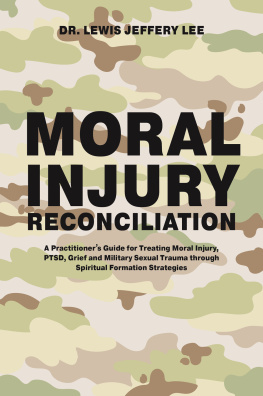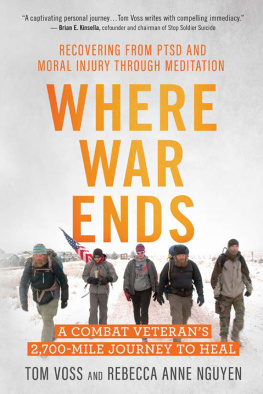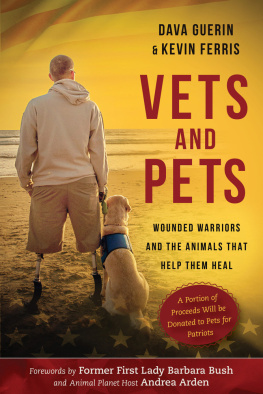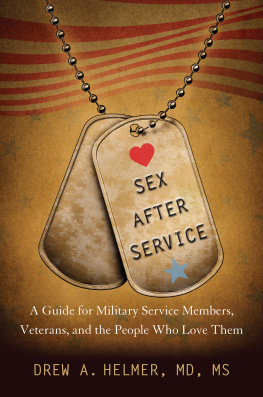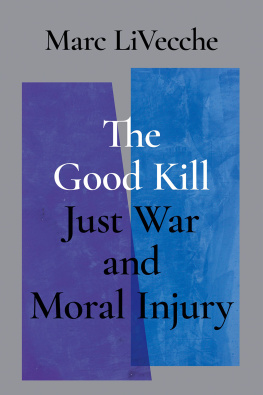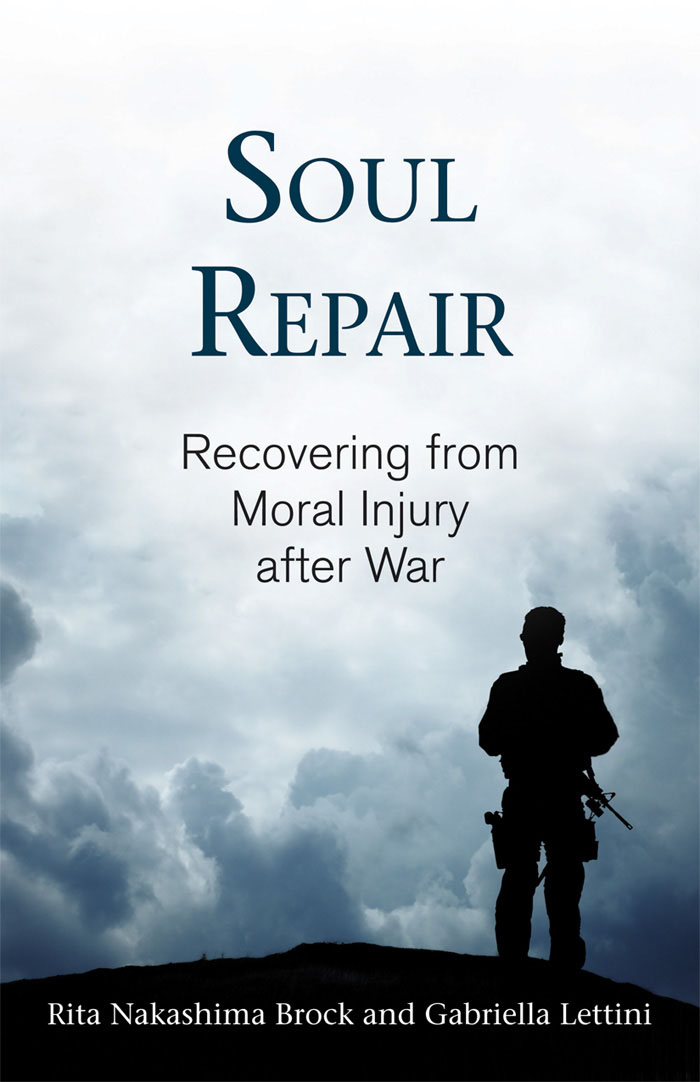SOUL REPAIR
Recovering from Moral Injury after War
Rita Nakashima Brock and Gabriella Lettini
With Camillo Mac Bica, Herman Keizer Jr.,
Pamela Lightsey, and Camilo Ernesto Meja
Beacon Press
Boston
IN MEMORIAM
Roy Grady Brock
19231976
Giuseppe Torelli
19792009
My father, who fought in World War II, tried to tell me, War is not as glamorous as they make it out to be. But I was too stubborn and bull-headed to listen. When you are young, you want to get that experience for yourself... and, boy, I asked for it.
I saw more than I ever wanted to see.... You are seeing how war affects civilians in the area. Every house you look at has bomb craters or bullet holes in it.... It makes them put their humanity aside to make it in a war zone. You see all that stuff and you see how it affects you and everyone around you, and you say, Why are we doing this anymore?
[I found out] we were in the area of Iraq that was supposed to be the Garden of Eden, the cradle of civilization where mankind began. I had to ask myself, Why am I carrying around an M16 in the Garden of Eden?
KEVIN BENDER MAN, COMBAT VETERAN, U. S. ARMY, IN SOLDIERS OF CONSCIENCE
Contents
Introduction
To violate your conscience is to commit moral suicide.
REV. HERMAN KEIZER JR., Colonel and Chaplain, U.S. Army, Ret.
After we send men and women off to war, how do we bring them home to peace?
Obviously distraught, the three people huddled, whispering to each other while they waited patiently at the end of a long line that had formed after Ritas lecture on moral injury in Houston, Texas. When the two women and the man finally reached her, they said they were from a United Methodist Church. Their words tumbled out on top of each other: You dont know how much your lecture meant to us... We didnt know how to help him... The suicide was such a shock... The whole church is heartbroken... We wish we had known about moral injury... It makes so much sense... Maybe we could have helped him.
The groups distress was raw and urgent. Their description was disjointed, as if their jumbled memories had not come into focus. When they realized that Rita was puzzled, they filled in some of the details. They explained that the suicide of a young veteran, deeply beloved in their church, was unexpected. The whole church community was reeling and struggling to understand how it had failed him. He was a hero to so many, they said, that the Department of Veterans Affairs (VA) had sent crisis counselors to a national gathering of veterans meeting at the time of the suicide. After the group explained the impact of the suicide on them and their community, one of the women said, We want to learn more about moral injury. Our community needs this information. We couldnt save Clay, but maybe we can help save others.
Within days of Ritas lecture in April 2011, national media sources reported Clay Warren Hunts story. He was a twenty-eight-year-old former marine corporal who earned a Purple Heart serving in Iraq and Afghanistan. He had been active in a suicide-prevention program for vets. Since 2009, he had been a model to other veterans of a successful return home. He married and started college in California; he advocated for veterans rights and worked in disaster relief. He was being treated for post-traumatic stress disorder (PTSD). Then, his marriage ended, he left school, went into treatment for depression, and returned to Houston where he got a job and an apartment in Sugar Land, Texas. On March 31, 2011, he bolted himself in that apartment and shot himself. Over a thousand people attended his funeral.
Veteran suicides average one every eighty minutes, an unprecedented eighteen a day or six thousand a year. They are 20 percent of all U.S. suicides, though veterans of all wars are only about 7 percent of the U.S. population. Between 2005 and 2007, the national suicide rate among veterans under age thirty rose 26 percent. In Texashome of the largest military base in the world and the third-highest veteran populationrates rose 40 percent between 2006 and 2009. These rates continue, despite required mental health screenings of those leaving the military, more research on PTSD, and better methods for treating it. Veterans are also disproportionately homeless, unemployed, poor, divorced, and imprisoned. The statistics, however, do not disclose the devastating impact of war on veterans families and friends, on their communities, and on other veterans.
The journey home to peace is perilous after war. We can make it less lonely and lethal. The veterans stories that unfold in this book describe a wound of war called moral injury, the violation of core moral beliefs. The stories reveal the lifelong struggle of veterans to live with its scars, the impact on their families, and the various ways our society can support the recovery of those who experience moral injury.
Moral injury is not PTSD. Many books on veteran healing confuse and conflate them into one thing. It is possible, though, to have moral injury without PTSD. The difference between them is partly physical. PTSD occurs in response to prolonged, extreme trauma and is a fear-victim reaction to danger. It produces hormones that affect the brains amygdala and hippocampus, which control responses to fear, as well as regulate emotions and connect fear to memory. A sufferer often has difficulty forming a coherent memory of a traumatic event or may even be unable to recall it. Symptoms include flashbacks, nightmares, hypervigilance, and dissociation.
Our ability to calm or extinguish fear and process emotions is often impaired by trauma, and a previous history of emotional trauma or a brain injury can make a person more susceptible to PTSD. Dissociative episodes can put sufferers back into experiences of terror and make them lose a sense of the present. They can feel unreasonable fear in ordinary situations or startle at sounds that mimic battle. They may experience a compulsive need to retell stories of terror, to reenact them, and to transfer past fear-inducing conditions to the present. With PTSD, memory erupts uncontrollably and retraumatizes the sufferer, which can make retrieving a coherent memory nearly impossible. Clinicians have treatments for PTSD, and such therapies are crucial for those diagnosed with it.
The moral questions emerge after the traumatizing symptoms of PTSD are relieved enough for a person to construct a coherent memory of his or her experience. We organize emotionally intense memories into a story in the brains prefrontal cortex, where self-control, planning, reasoning, and decision making occur. The mind creates a pattern from memory fragments stored in various places. Emotions are essential to moral conscience, but until people can construct enough of a coherent narrative to grasp what they did, they cannot evaluate it. The brain organizes experiences and evaluates them, based on peoples capacity to think about moral values and feel empathy at the same time.
Marine veteran and philosopher Camillo Mac Bica used the term moral injury in his war journals from Vietnam, and, from the perspective both of warrior and of moral philosopher, he has explored the agony of this inner judgment against himself. Moral injury is the result of reflection on memories of war or other extreme traumatic conditions. It comes from having transgressed ones basic moral identity and violated core moral beliefs.
Moral injury names a deep and old dilemma of war. The moral anguish of warriors defines much literature about war from ancient times to the present, such as the Greek



